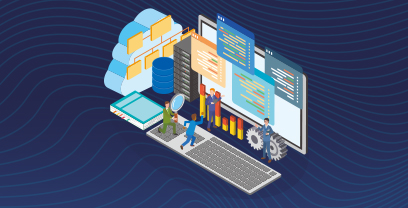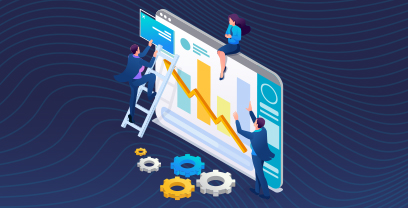Source-to-Pay (S2P) is a critical element in modern procurement strategies, offering a comprehensive framework to streamline processes and optimize organization-wide operations. However, while the benefits of implementing an S2P solution are undeniable—enhancing efficiency, centralizing procurement activities, and improving financial performance—its success hinges on effective, well-planned implementation.
The implementation process serves as the foundation for realizing the true potential of an S2P solution. A carefully structured approach ensures smooth integration, minimizes risks, and maximizes ROI. Improper implementations often lead to budget overruns, misaligned goals, or delays that derail the intended value of the system.
This blog shares insights gathered from the Ivalua S2P Implementation Guide where we surveyed 31 system integrators to highlight common challenges, readiness factors, and practical recommendations for successful S2P adoption.
Readiness Factors for S2P Implementation
A thorough organizational readiness evaluation is paramount before embarking on an S2P implementation. Three main readiness factors emerged from the survey responses as critical to success:
- Strong Executive Sponsorship (59.3%): Executive buy-in is a non-negotiable foundation for the project. Leadership alignment ensures adequate resources, visibility, and engagement across all functions. Without senior-level support, projects risk lacking direction and stalling mid-way.
- Clear Understanding of Current Processes and Gaps (52.7%): Documenting and analyzing existing Source-to-Pay processes sheds light on inefficiencies and operational issues. This process enables businesses to select solutions tailored to their specific needs, ensuring a better alignment between technology capabilities and procurement goals.
- Defined Project Goals and Objectives (46.2%): Setting clear, measurable objectives—such as enhancing supplier management, increasing spend under management, or improving contract compliance—anchors the entire implementation. These goals drive the project’s structure and guide outcome tracking post-implementation.
Other factors that enhance readiness include sufficient budget allocation (44%), an engaged team of internal resources (42.9%), and fostering employee openness to change (27.5%).
Key Insight
Organizations must focus on achieving alignment between process, people, and technology before starting an S2P implementation. Conducting readiness assessments, addressing gaps, and securing sponsorship are essential first steps to ensure the project starts strong and stays on course.
Common Challenges During S2P Implementation
No project of this magnitude is without hurdles. Insights suggest that the following challenges play a significant role in complicating S2P implementations:
- Stakeholder Alignment and Change Management (58.7%)Stakeholder buy-in and change management emerged as critical factors. Resistance to change or poorly executed change management strategies can derail adoption, leading to incomplete implementations that don’t deliver the benefits expected.
- Changes in Project Scope (53.3%) Scope creep is a significant risk. It often occurs as stakeholders refine their demands during implementation. While changes can be essential, poorly managed scope expansions can delay projects and inflate costs.
- Data Migration and Integration Complexities (41.3%) Migrating legacy data and ensuring seamless integration with existing ERP systems are common pain points. Data inconsistency, poor quality, or complex system configurations frequently result in roadblocks or rework down the line.
Budget Overruns
Several of these challenges also lead directly to budget overruns:
- Scope Expansion (65.2%): Poorly defined requirements and frequent scope changes drive up costs. Proper project documentation and rigorous change request processes help address this.
- Data and Integration Challenges (41%): Misjudging the effort required for accurate data migration or system integration will often lead to unforeseen expenses.
- Complex Configuration Needs (40.2%): Customizing solutions excessively can inflate both cost and time, emphasizing the importance of balancing necessary configurations with standardization.
Key Insight
To mitigate these common challenges, organizations should implement robust project outlines, define clear boundaries for scope changes, and integrate strong data migration strategies to minimize disruptions.
Change Management and Communication Strategies
Introducing S2P solutions often requires organizational change, involving new processes, tools, and workflows. An effective change management approach ensures successful adoption, supports user buy-in, and reduces resistance.
Most Effective Change Management Practices
The survey revealed several effective strategies:
- Gather Stakeholder Input Early (57.6%): Engage teams early to ensure business needs are captured and align expectations. This builds enthusiasm and a sense of ownership.
- Nominate Ambassadors for Change (51.1%): Designate champions within departments to advocate for system adoption. These leaders bridge gaps between the project team and end users.
- Face-to-Face Training Sessions (35.9%):Personalized, interactive training strengthens understanding and confidence in using the solution.
Strengthened Communication
Implementation success heavily depends on seamless communication between all stakeholders.
Key recommendations include:
- Designated Project Managers (53.8%) for both customer and vendor sides to maintain accountability.
- Robust Governance Model (45.2%) for clear roles and streamlined decision-making.
- Dedicated Communication Channels (44.1%) to encourage collaboration and efficiently resolve issues.
Key Insight
Prioritize open communication across departments while providing clear guidance and support through ambassadors, training, and accessible resources.
Recommended Phases of Implementation and Timelines
Breaking S2P implementation into phases ensures that organizations properly manage resources and prioritize foundational elements.
Ideal Implementation Phases
- Supplier Information Management (SIM): Foundational to procurement data.
- Source-to-Contract (S2C): Drives early ROI and quick wins.
- Procure-to-Pay (P2P): Builds on procurement foundations.
- Supplier Risk & Performance Management (SRPM): Enhances supplier governance.
- Spend Analytics: Enables data-driven insights and optimization.
Typical Timelines
The time required for each phase typically depends on the organization’s size, technology ecosystem, and goals. However, organizations report phases lasting anywhere from several weeks to months depending on complexities and resource allocation.
Key Insight
Plan phased implementations strategically, targeting early wins like S2C to demonstrate ROI and build momentum while laying the groundwork for more advanced capabilities like SRPM and Spend Analytics.
Practical Recommendations for S2P Success
Successfully optimizing procurement through S2P requires organizations to focus on three pillars:
- Strategic Planning: Secure executive sponsorship, invest in readiness evaluations, and prioritize clarity in project goals.
- Technology Alignment: Opt for a “configure, not custom-code” approach to balance functionality and affordability.
- Change Enablement: Address potential resistance head-on with strong communication, training, and stakeholder engagement.
Early wins should be celebrated to maintain momentum and engagement, building confidence in the selected tools and methodologies.
Read here: The Source-to-Pay Technology Buyer’s Guide
Final Thoughts
A successful S2P implementation goes far beyond purchasing new technology—it’s a transformation that requires strategic alignment, rigorous planning, and excellent execution. By addressing common challenges, fostering collaboration, and adopting a phased approach, procurement professionals can set themselves up for long-term success.
Want to take your procurement strategy to the next level? Engage with our team today to craft an S2P implementation roadmap tailored to your organization’s unique needs. Unlock the competitive edge you need with efficient, effective S2P solutions!
Further Reading
Shaping the Future of Procurement: The Role of S2P Innovators




